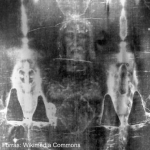 What is it that connects the age of the Shroud of Turin with the origin of meteorite fallen down near Kaba (Hungary) and the understanding of climate change? Timothy Jull, visiting professor at the MTA Atomki reveals the secret.
What is it that connects the age of the Shroud of Turin with the origin of meteorite fallen down near Kaba (Hungary) and the understanding of climate change? Timothy Jull, visiting professor at the MTA Atomki reveals the secret.
The professor was a member of a prestigious scientific committee, which managed to persuade the custodians of the Shroud of Turin — one of the most popular relics of the Catholic Church — to provide some samples for dating. The first measurements took place in 1988 followed by other independent studies, and the researchers concluded that the fabric definitely originates from the middle ages, so contrary to popular myth, the body of Jesus Christ couldn’t have been wrapped in it.
The Shroud of Turin was just the first in the line of relics studied by Timothy Jull and his laboratory in Arizona: the trust gained by this successful endeavour opened the path to the radiocarbon dating of other similarly precious objects. However, one cannot overlook the fact that although the dating of the Shroud of Turin was worthy enough to be published in Nature, many researchers choose to keep a safe distance from objects of this kind. Doing so, saves them from arguing with people, with whom they don’t share any common understanding of scientific facts whatsoever. Taking a more optimistic stance, Timothy Jull believes instead that these relics present a great opportunity for bringing science closer to people.
Now we can understand the editors at the National Geographic Society, when they chose the Arizona professor to help them reveal the true history of the Gospel of Judas.
More: MTA news (in Hungarian)
 Magyar
Magyar

